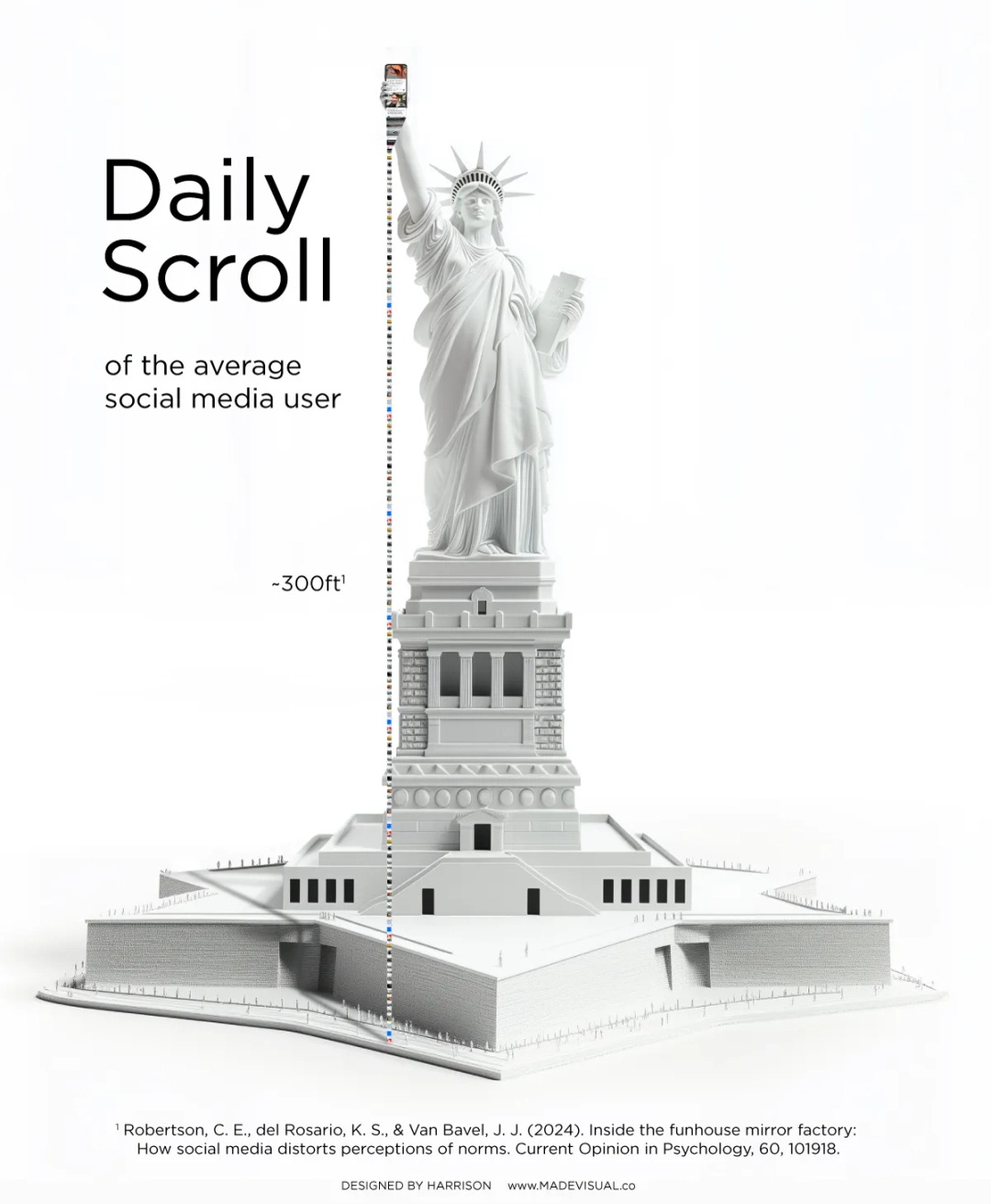The Echo Chamber Effect: Why Social Media Distorts Reality
Unveiling how a vocal minority and algorithmic amplification create false norms and foster polarization online

Latest research from scholars at New York University and other institutions uncovers how social media distorts social norms, creating a 'funhouse mirror' effect that amplifies extreme opinions and misrepresents reality.
TL;DR
Social media distorts reality: 3% of users produce 33% of content, and 0.1% share 80% of fake news.
74% of online conflicts originate from just 1% of communities, amplifying polarization and negativity.
Algorithms favor divisive content, with news showing outgroup hostility being 67% more likely to be shared.
97% of political posts come from just 10% of users, overshadowing moderate voices.
‘Doomscrolling’ adds up: the average person scrolls through about 300 feet of content daily, increasing exposure to distorted norms.
Explained Further
What Are Social Norms?
Social norms are the behaviors and beliefs that groups consider acceptable. They help people understand how to act and belong to a community. However, social media often twists these norms. Instead of reflecting reality, it amplifies extreme views, creating a distorted sense of what’s normal.
Who Shapes Social Media Norms?
Surprisingly, a small group of users has a huge impact. Just 3% of accounts create 33% of content, and 0.1% of users spread 80% of fake news. These extreme voices often dominate, overshadowing the more moderate opinions of the majority. Algorithms designed to boost engaging content prioritize these outliers, making their views seem far more common than they are.
Why Are Online Norms Distorted?
Social media platforms focus on capturing attention. Posts that spark outrage or surprise are more likely to go viral, even if they don’t reflect reality. For instance, political discussions are dominated by the most extreme users—97% of political tweets come from just 10% of users. This exaggerates negativity and conflict, making it seem like everyone is divided.
What Are the Consequences?
This distortion affects how people behave in real life. Teens who see posts promoting risky behaviors, like heavy drinking, may believe these actions are normal and copy them. Similarly, constant exposure to unrealistic beauty standards online can harm self-esteem and mental health, especially among young girls.
What can be done?
Awareness is key. By recognizing that social media doesn’t always reflect reality, we can think critically about the content we consume. Seeking balanced perspectives and supporting positive, nuanced posts can help combat the “funhouse mirror” effect and create healthier online spaces.
The Full Scoop
To learn more about the research, you can check the the article on Current Opinion in Psychology journal on this topic



